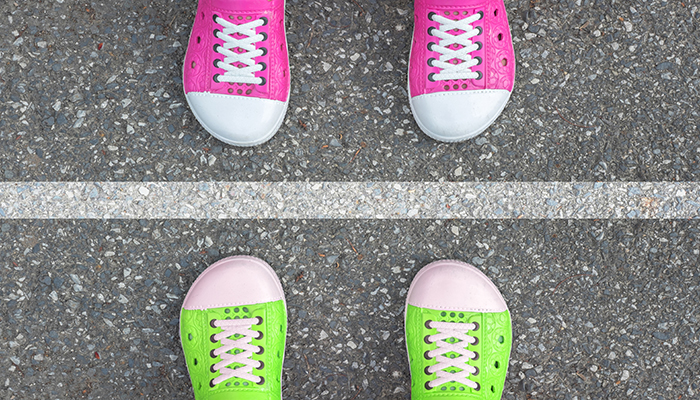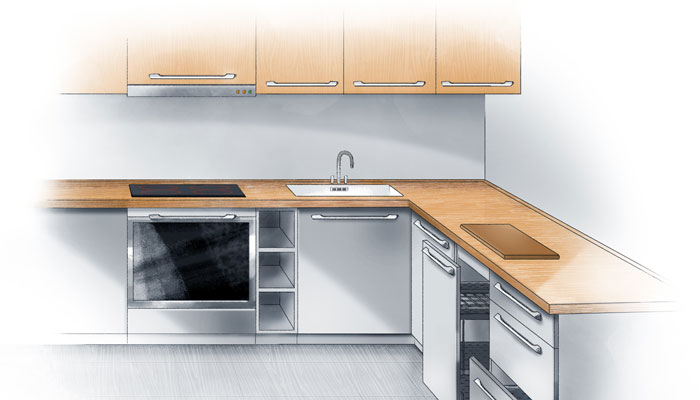Family Caregiver Connection
Helpful tips for family caregivers
February/March 2019
February is American Heart Month, and we celebrate with articles to help you protect your loved one with heart failure (HF), as well as yourself, from stress and burnout. Fatigue is common with HF and many other serious illnesses. Check out our tips for creating a daily energy budget. And speaking of budgets, your own personal tank of energy is not bottomless. See what the research suggests in terms of gracious ways to set limits and say “no.” Last, we look at principles of universal design as applied to the kitchen in case your loved one loves to cook but is “running out of gas” to do so.
Addressing fatigue in heart failure

People with heart failure (HF) often tire easily, especially if they exert themselves. In HF, the heart is swollen with fluids and cannot beat efficiently. The body’s cells then become hungry for oxygen. If your loved one has HF, you witness this in his or her fatigue, shortness of breath, and frequent naps.
Even with HF, however, your relative needs to be physically active. Physical activity helps the heart muscle gain strength. It improves circulation. It helps with weight control, and, oddly, with reducing fatigue. Exercise also helps with depression, which is common in HF.
Pacing is the key. Talk with the doctor about optimal forms of physical activity. Initially, walking, swimming, or biking may be recommended. As HF progresses, simple tasks, such as taking a shower or cooking a meal, may qualify as exercise. Ask the doctor for a prescription to work with a cardiac rehab team to create an activity plan tailored to your loved one’s needs.
Conserving energy. Think of personal energy as a tank of gas. With HF, your relative has a small tank and needs to be “fuel efficient.” Conserving energy when doing chores leaves more “in the tank” for doing things that bring joy and meaning.
- Alternate periods of activity with periods of rest. Divide large chores into smaller tasks throughout the day or across the week.
- Avoid rushing. It wastes energy.
- Work smarter. Minimize trips up or down stairs. Cook large quantities of food and freeze for heating later. Instead of towel drying, slip on a terry cloth bathrobe after bathing.
- Get help for mundane tasks. Have groceries and prescriptions delivered.
- Create workstations that permit cooking, grooming, dressing, bathing while seated.
- Use a cart or walker with a basket for carrying things from place to place.
- Avoid bending or reaching. Use extenders.
Setting limits: saying "no" nicely
 Many of us were raised to believe that the only polite or kind answer is “yes.” But as Dr. Christine Carter, a UC Berkeley researcher, notes, “If you find yourself saying ‘yes’ when you mean ‘no,’ it’s a recipe for overwhelm and exhaustion.” Not to mention resentment, burnout, and ill health!
Many of us were raised to believe that the only polite or kind answer is “yes.” But as Dr. Christine Carter, a UC Berkeley researcher, notes, “If you find yourself saying ‘yes’ when you mean ‘no,’ it’s a recipe for overwhelm and exhaustion.” Not to mention resentment, burnout, and ill health!
Ironically, research shows that the busier we are, the more we tend to say “yes.” Saying “yes” makes us feel generous. The consequences—becoming stressed and overburdened by the commitment—are down the road. We’d rather overlook those realities than feel stingy or selfish right now by setting limits and saying “no.”
According to Dr. Carter, there are three steps to saying “no” gracefully:
- Rehearse saying “no.” There is a process. First, avoid comparing your need to the other person’s. Then, train yourself to think through how you will feel when the day of reckoning comes. Recall the last time you overextended yourself and ended up sick. Or ended up too tired to do something you were looking forward to. Finally, practice a few phrases that you can readily use, no extra thinking required.
- Be truthful, but vague. Having a response you feel confident in makes it more likely that you will use it. You don’t have to justify yourself. (Too much detail and the requester will start problem solving to help you find the time!) A simple “I wish I could, but that doesn’t work for me at this time” is an effective standby. Or if you would genuinely like to help, “I can’t do ‘X’ next Thursday, but I could do ‘Y’ the week after that.”
- Make your decision final. If the person pushes you, repeat the same phrase. This way you signal that you aren’t going to change your mind. If they insist, then be honest about how their pressure makes you feel: uncomfortable, perhaps even hurt or angry.
Age-friendly kitchen
 Aging creates so many “new normals.” Even routine activities such as cooking may become challenging for your loved one.
Aging creates so many “new normals.” Even routine activities such as cooking may become challenging for your loved one.
Balance issues can make reaching, bending, or lifting a problem. Arthritis often makes it difficult to maneuver pans and tools, turn on a faucet, or twist off lids.
Extreme fatigue may sap overall motivation. And problems with memory increase the risk of a kitchen fire.
Consider these revisions to create an age-friendly kitchen.
- Stoves. Choose a stove with continuous grates (for gas) or a flat surface so that pots can be moved off the burner without lifting. And look for stove controls that face the front so your loved one is not reaching over hot pots to change settings. If memory is a concern, add an automatic stove shut-off sensor. (If there is no movement around the stove for 15 minutes or so, the device shuts off all burners.)
- Microwaves. Countertop rather than overhead placement makes access safe and easy.
- Sinks and faucets. Install a single-handle faucet to make it easier for those with arthritis. You might even consider a faucet with sensors at its base to turn the water on and off. If possible, position a sink with a hose sprayer near the cooking area so a pot can be filled in place on the stove with no need for lifting.
- Cabinets. Place frequently used items and heavy items within comfortable reach to reduce bending. Install lazy susans and pullout shelving for easier access. Use “loop” pulls or long “D-shaped” handles rather than knobs for cabinet doors.
- Countertops. Include lighting under cabinets to compensate for shadows cast by overhead fixtures. Create countertops at several heights with knee space underneath to permit use as a seated workstation if need be.
- Freezer/refrigerator. Look for a side-by-side model rather than top-and-bottom. Include pullout drawers and shelves to minimize reaching and bending.

